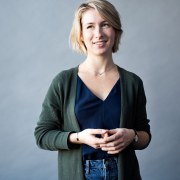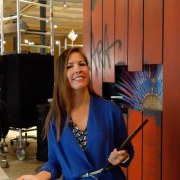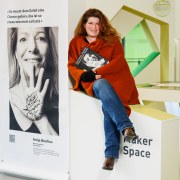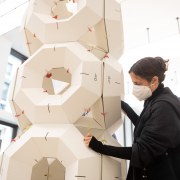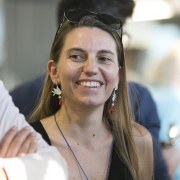Making art from science: possibilities, gains, fails and some inspiration
This session is about collaborations between scientists and artists. We share mistakes and successes of the process and outcome of a handful of cases. Art can change our perspective, open new doors and give us the opportunity to speak to new audiences. Looking at recent examples we will uncover various perspectives and discuss other opportunities to involve art into scientific projects. Was it art outside or inside the science institution? Did we manage to attract new audiences? How many disciplines/collaboration sides were involved? How did we organise the collaboration with the artists? Did the artist have full freedom? Was it time-consuming to support the needs of the artist? Could we find a common language? What 21st century skills do we and the artists need to successfully collaborate? After sharing several perspectives and examples we ask our attendees to share their successes and failures of making art & science projects. We are eager to hear about your experiences!
Outcomes: what will participants get from this session? Skills, knowledge, experience etc.
Session attendees will see examples of collaborations with artists
Session attendees will be able to collect insights, which critical points in such collaborations they have to keep in mind, what background and aims the artists have
Participants will have a clear idea of how they can collaborate with artists and what they need to do to make it a success
Open discussion on collaborations with artists – everyone is invited to share their thoughts, experiences and reflections
Facilitator
Business development & communication
Session speakers
Partner/creative director
Working with artists in science museums can be challenging, as art sometimes has a lot less space. Some art requires the ‘neutrality’ of a white cube. On another level, museum professionals often want to control what the artwork will become. How do you commission an artwork that works in the context of your museum and enhances the content, while giving the artist full freedom at the same time?
Museum für Naturkunde Berlin
My input will be on presenting science in art museums, artist-in-residence programmes, artists visiting scientists in research labs, art and science study programmes, as well as what artists feel about collaborations with science. How much freedom should be given to the artist in such collaborations and how do you establish a productive dialogue between two sides?
exhibition conception and development
It is impossible to presuppose an understanding of art. The audience and staff needs to be prepared for art and encouraged to notice, provoke and articulate emotions. In places like a Biennale, art may be allowed to shake things up and ask questions. Art can be an accelerator instead of a hurdle in a non-art museum and must be then recognized as a difference to sophisticated scenography. How can art and artists open minds to science and science communication- without appearing artificial?
Collective Paper Aesthetics
For the past decade the studio developed a work method with science and art museums on developing materials for audience engagement based on design thinking process. The session input will focus on the Empathize phase - hence the starting point of the studio when two curators from Hayward Gallery in London found the presentation of my thesis model from the Berlage Institute 2004 in London Festival of Architecture 2008 a good match with learning and participation for Psycho Buildings: Artists Take On Architecture.
From its opening in 2016, the Quai des Savoirs has been involved in art and science residencies. To programme the creations at Quai des Savoirs for our audience, but also to become part of the creation process, to facilitate the access to science for artists and vice versa but also to help both of them to open their mind on creation and research. But how to create the good conditions for artists and scientists to meet, to talk, to have the desire to work together and to create in our institutions?

